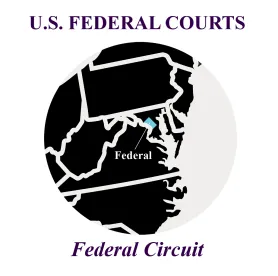Amgen Inc. v. Sanofi, Aventisub LLC, No. 20-1074 (Fed. Cir. 2021)
Summary
The Federal Circuit issued an opinion on February 11, 2021, invalidating antibody claims covering Amgen’s Repatha® (evolocumab) product. The court found, in a unanimous decision, that a genus of antibodies claimed only by epitope-binding activity is invalid for lack of enablement if it does not satisfy a new higher bar imposed by the court.
Background
Repatha® is Amgen’s blockbuster biologic, cholesterol-lowering drug with more than $20 billion in annual sales and is indicated for reducing the risk of heart attack and stroke. Amgen owns U.S. Patents 8,829,165 (the ’165 patent) and 8,859,741 (the ’741 patent), which claim evolocumab antibodies that bind to proprotein convertase subtilisin/kexin type 9 (PCSK9). According to the ’165 and ’741 patents, the claimed antibodies block PCSK9 from binding to low-density lipoprotein (LDL) receptors in order to prevent mediation of LDL-receptor degradation and to allow LDL receptors to remove LDL cholesterol from the blood stream.
Claims 19 and 29 of the ’165 patent and claim 7 of the ’741 patent were at issue before the court and recite antibodies that bind to amino acid residues of the PCSK9 protein and block PCSK9 from binding to LDL receptors. In both instances, the antibodies are claimed by their epitope-binding activity, including binding to PCSK9 (the ’165 patent) and blocking the PCSK9/LDL receptor interaction (the ’741 patent) and both patents share the same specification.
Representative claims of the ’165 patent are as follows:
1. An isolated monoclonal antibody, wherein, when bound to PCSK9, the monoclonal antibody binds to at least one of the following residues: S153, I154, P155, R194, D238, A239, I369, S372, D374, C375, T377, C378, F379, V380 or S381 of SEQ ID NO:3, and wherein the monoclonal antibody blocks binding of PCSK9 to LDLR.
19. The isolated monoclonal antibody of claim 1 wherein the isolated monoclonal antibody binds to at least two of the following residues S153, I154, P155, R194, D238, A239, I369, S372, D374, C375, T377, C378, F379, V380 or S381 of PCSK9 listed in SEQ ID NO:3.
Representative claims of the ’741 patent are as follows:
1. An isolated monoclonal antibody that binds to PCSK9, wherein the isolated monoclonal antibody binds an epitope on PCSK9 comprising at least one of residues 237 or 238 of SEQ ID NO: 3, and wherein the monoclonal antibody blocks binding of PCSK9 to LDLR.
2. The isolated monoclonal antibody of claim 1, wherein the isolated monoclonal antibody is a neutralizing antibody.
7. The isolated monoclonal antibody of claim 2, wherein the epitope is a functional epitope.
Procedural History
Amgen asserted the ’165 and ’741 patents against Sanofi, Aventisub LLC, Regeneron Pharmaceuticals Inc. and Sanofi-Aventis U.S. LLC (collectively, Sanofi). The jury found that the asserted claims were not invalid for lack of enablement and written description.
Sanofi appealed the decision to the Federal Circuit, which held that the district court erred in its jury instructions regarding written description and enablement and remanded the case back to the district court for a new trial on those issues.
On remand from the Federal Circuit, the jury again found that the asserted claims were not invalid for lack of written description or enablement. Sanofi, however, moved for a judgment as a matter of law for a finding of invalidity due to lack of enablement and lack of written description. The district court denied the motion regarding written description and granted the motion finding a lack of enablement. Amgen subsequently appealed the decision to the Federal Circuit, and the Federal Circuit affirmed the district court’s finding that the claims at issue lack enablement.
Federal Circuit Opinion
The Federal Circuit considered whether Amgen’s specification sufficiently taught how to make and use the full breadth of its functionally claimed antibodies. All of the claims at issue recited antibodies according to their epitope-binding activity, including binding to PCSK9 (the ’165 patent) and blocking the PCSK9/LDL receptor interaction (the ’741 patent). The court found that Amgen’s claims were defined by their functional properties without sufficient corresponding structural features in the specification – thereby establishing a new, higher bar for functional antibody claims.
While the Federal Circuit fell short of finding that antibodies cannot be functionally claimed, it significantly raised the bar for enabling functional antibody claims. The court reasoned that “while functional claim limitations are not necessarily precluded in claims that meet the enablement requirement, such limitations pose high hurdles in fulfilling the enablement requirement for claims with broad functional language.”
Amgen argued that, given the nature of antibodies, the broader molecular structure that the antibody binds to is the more important invention rather than the specific antibodies that bind to it. Sanofi countered that companies should not be permitted to patent something they have not yet discovered and argued that the resulting patents preclude competition. The Federal Circuit sided with Sanofi, finding that the effort needed to discover the antibodies that were not specifically disclosed in the patent would take too much trial and error, and that while “we do not hold that the effort required to exhaust a genus is dispositive,” the amount of effort needs to be taken into account.
Where antibody claims are functionally defined, the court provided guidance for assessing enablement that focuses on claim breadth. According to the court, “the enablement inquiry for claims that include functional requirements can be particularly focused on the breadth of those requirements, especially where predictability and guidance fall short.” Further, the court noted that “it is important to consider the quantity of experimentation that would be required to make and use, not only the limited number of embodiments that the patent discloses, but also the full scope of the claim.”
The Federal Circuit concluded that “[t]he functional limitations here are broad, the disclosed examples and guidance are narrow, and no reasonable jury could conclude under these facts that anything but ‘substantial time and effort’ would be required to reach the full scope of claimed embodiments.” Hence, the Federal Circuit affirmed the district court’s holding that the claims were not enabled.
Summary
In view of the Federal Circuit’s new guidance in the Amgen v. Sanofi decision, patentees should take particular care to describe and claim various structural antibody features without relying solely on functional properties of those antibodies. Descriptions of epitopes and epitope-binding activity will be important, but not sufficient to obtaining antibody patent protection. To improve the odds of obtaining functional claims for antibodies, patentees must meet the new, higher bar by including sufficient numbers and breadth of examples to support the claims as well as significant guidance regarding the relationship between antibody structure and function.




 />i
/>i

